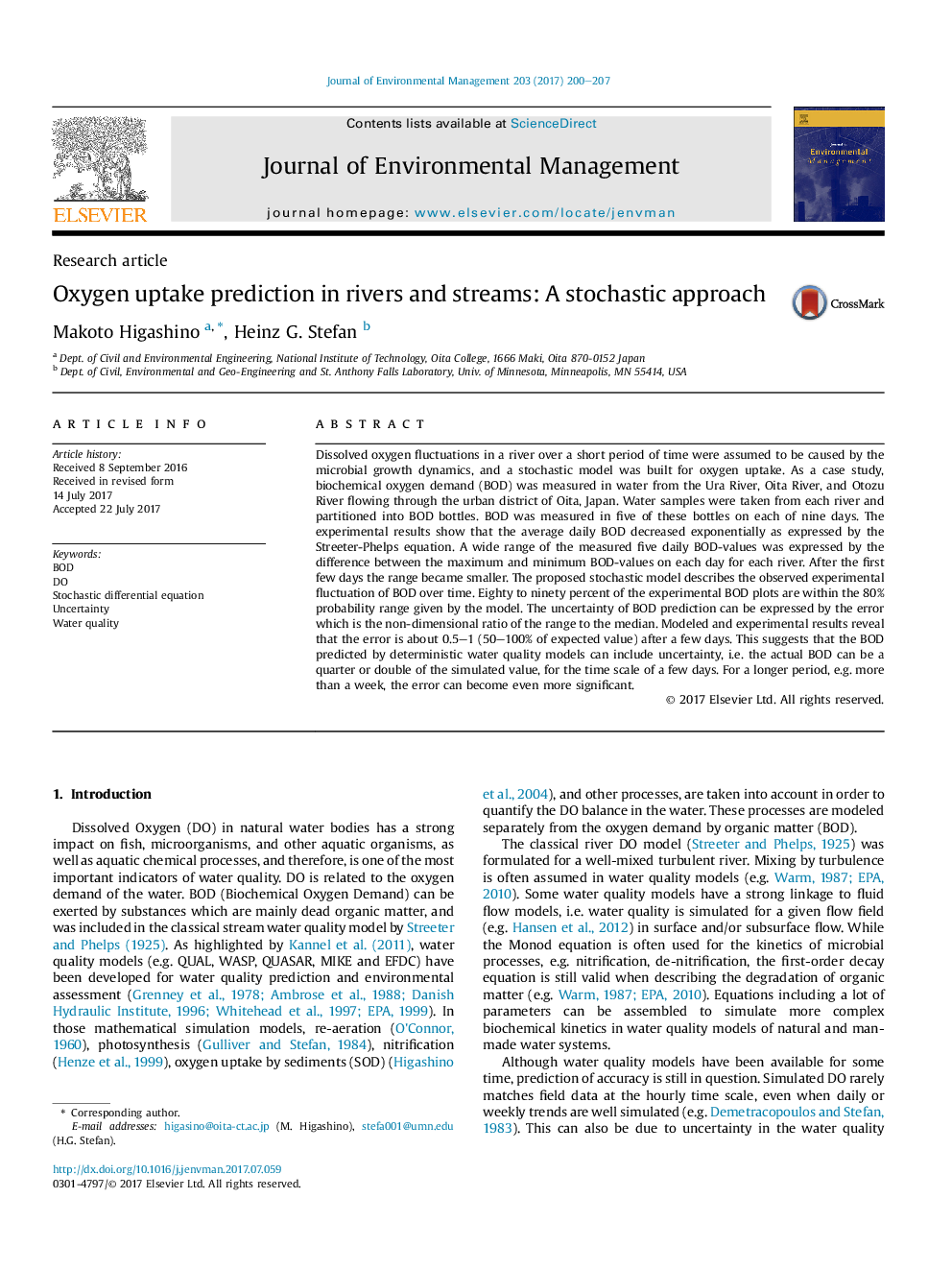| Article ID | Journal | Published Year | Pages | File Type |
|---|---|---|---|---|
| 5116505 | Journal of Environmental Management | 2017 | 8 Pages |
Abstract
Dissolved oxygen fluctuations in a river over a short period of time were assumed to be caused by the microbial growth dynamics, and a stochastic model was built for oxygen uptake. As a case study, biochemical oxygen demand (BOD) was measured in water from the Ura River, Oita River, and Otozu River flowing through the urban district of Oita, Japan. Water samples were taken from each river and partitioned into BOD bottles. BOD was measured in five of these bottles on each of nine days. The experimental results show that the average daily BOD decreased exponentially as expressed by the Streeter-Phelps equation. A wide range of the measured five daily BOD-values was expressed by the difference between the maximum and minimum BOD-values on each day for each river. After the first few days the range became smaller. The proposed stochastic model describes the observed experimental fluctuation of BOD over time. Eighty to ninety percent of the experimental BOD plots are within the 80% probability range given by the model. The uncertainty of BOD prediction can be expressed by the error which is the non-dimensional ratio of the range to the median. Modeled and experimental results reveal that the error is about 0.5-1 (50-100% of expected value) after a few days. This suggests that the BOD predicted by deterministic water quality models can include uncertainty, i.e. the actual BOD can be a quarter or double of the simulated value, for the time scale of a few days. For a longer period, e.g. more than a week, the error can become even more significant.
Related Topics
Physical Sciences and Engineering
Energy
Renewable Energy, Sustainability and the Environment
Authors
Makoto Higashino, Heinz G. Stefan,
